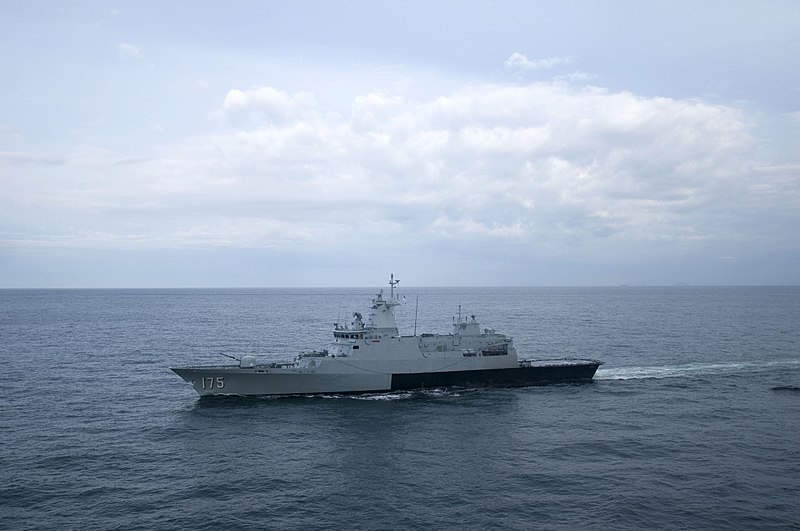The government has now given the go-ahead for construction of new 80 metre offshore patrol vessels (OPVs) under the SEA 1180 program, but Australia could have had such vessels almost two decades ago under a proposed joint acquisition deal with Malaysia.
To continue reading the rest of this article, please log in.
Create free account to get unlimited news articles and more!
Cabinet documents for 1994 and 1995, released by the National Archives of Australia at the start of 2018, show the Paul Keating Labor government was willing to give “modest support” to the proposed joint acquisition deal with Malaysia for strategic foreign policy and commercial reasons.
But that was provided any associated costs did not distort defence, trade or foreign policy priorities.
The government agreed to stump up $12 million for initial design work.
What was called a Joint Patrol Vessel (JPV) stemmed from a common need. Australia wanted to replace 15 ageing Fremantle Class patrol boats with a new class of offshore patrol combatant (OPC) from about 2004.
The Royal Malaysian Navy needed to start replacing elderly patrol craft starting in 1997-98 and had been in contact with a number of shipbuilders, including Transfield Shipbuilding.
Malaysian defence minister Najib Razak (now Malaysia’s Prime Minister), accompanied by Australian defence minister Robert Ray, visited Transfield in April 1992 to discuss a possible collaborative build program.
Subsequent discussions between the Royal Australian Navy and the Royal Malaysian Navy settled on a basic design.
That was an 80-metre 1,250-tonne vessel with helicopter landing deck, not that unlike the slightly larger Lürssen Darussalam Class vessels on which Australia’s new OPVs will be based.
And there appeared to be compelling reasons to proceed with the deal.
It would boost defence relations with Malaysia, demonstrate Australia’s commitment to the region, boost Australian industry competitiveness and defence exports.
Transfield – subsequently Tenix and now BAE Systems Australia – was not expected to have much chance of winning without strong government endorsement.
The cabinet documents note this really came down to a favourable reception from then Malaysian prime minister Dr Mahathir Mohamad, described as idiosyncratic but also pragmatic.
The idiosyncratic reference clearly relates to the confected row of late 1993 when Mahathir objected to Keating’s description of him as “recalcitrant”. That took diplomatic relations to near breaking point before Malaysia backed down.
In comments on the proposal, Foreign Affairs said the recalcitrant row probably hadn’t hurt Transfield’s chances. However, Finance cautioned that the Navy could end up with a vessel that exceeded its requirements and cost much more than expected.
Still, the government proceeded with the proposed deal, right up to October 1997 when Malaysia abruptly announced the winner was German shipbuilder Blohm and Voss with their 1,850-tonne Kedah Class, based on the Meko 100 design.
As it turned out, just six of the 27 planned were ever built.
For Australia, there was one significant consequence of all this. For the new OPV, plus the Anzac frigates, Defence concluded it would need an intermediate-size helicopter and settled on the Kaman Seasprite.
After extensive technical problems, delays and cost overruns, the Seasprite project was cancelled in March 2008 at a cost in excess of $1 billion.
Australia instead ended up with the 56.8m Armidale Class Patrol Boats with 300 tonnes displacement, which will be replaced by the Lürssen OPVs, measuring at 80m and with a displacement of 1,700 tonnes under SEA 1180 project.

 Login
Login







